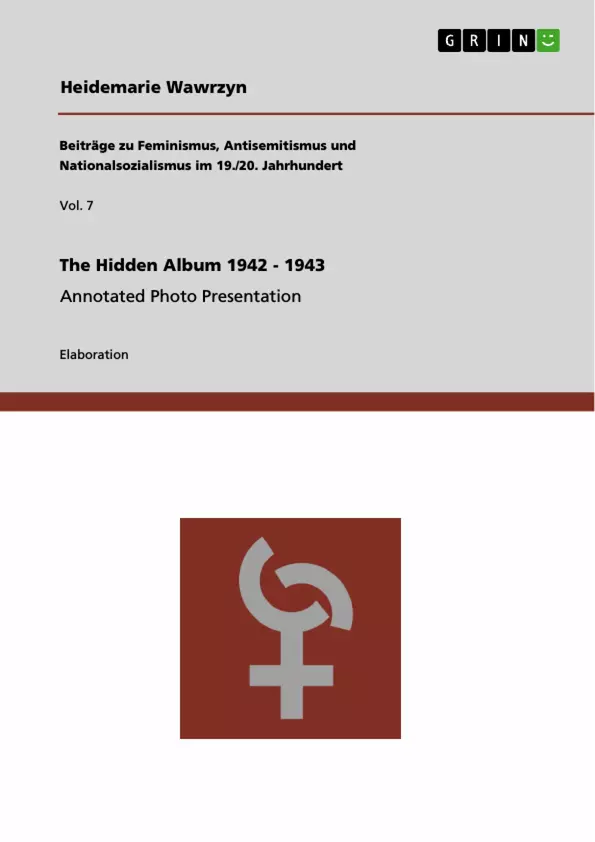Beiträge zu Feminismus, Antisemitismus und
Nationalsozialismus im 19./20. Jahrhundert: Vol 7.
The planned presentation has been written on the occasion of International Holocaust Remembrance Day. The starting point of the project was the discovery of a hidden military album including photos of Belarus and Russia in 1942/43. Many German soldiers kept photo albums to commemorate their “glorious days” in World War II. They had been in places where German killing units – Einsatzgruppen – had murdered Jews, Communists and anyone opposed to their advance. In towns like Grodno, Baranowicze, Bobruisk, Orel, and Briansk – hardly household names - Jews were sent to ghettos, forced into labor service, and routinely rounded up and massacred. The Einsatzgruppen and the German Army worked together. By spring 1943, approximately 1.25 million Jews were dead.
The annotated photo presentation displays twenty-four black and white photographs. Looking closely at one snapshot, the reader can see yellow badges on the coats of women holding shovels in their hands. On the same page, a soldier is laughingly pulling a woman away from a truck. What is the background to these pictures? What had happened there? The author tries to find answers to these questions – questions which are difficult to solve almost seventy years after the Holocaust.
Inhaltsverzeichnis (Table of Contents)
- Breaking the Silence (Introduction)
- His Time of Service (Excerpts and Photos from a Documentary)
Zielsetzung und Themenschwerpunkte (Objectives and Key Themes)
This project aims to investigate the contents of the author's father's military album, which contains photos taken during World War II in Belarus and Russia. The project explores the role of the German army and SS units in the persecution and murder of Jews during this period.
- The involvement of the German army in the Holocaust
- The role of ordinary soldiers in the persecution of Jews
- The use of photographs as evidence of historical events
- The challenge of confronting difficult family histories
- The impact of World War II on civilian populations
Zusammenfassung der Kapitel (Chapter Summaries)
The first chapter, "Breaking the Silence," introduces the project and provides context for the author's father's military album. It discusses the historical background of the Holocaust in the context of the Nazi invasion of the Soviet Union and the activities of the SS Einsatzgruppen. The chapter emphasizes the importance of examining the role of ordinary soldiers in the persecution of Jews.
The second chapter, "His Time of Service," presents a selection of photographs from the author's father's album, accompanied by annotations and explanations. The chapter explores the historical context of the photographs and the actions of the German army in the areas depicted. It also includes excerpts from a documentary film about the author's father's experiences.
Schlüsselwörter (Keywords)
The primary focus of this project is the role of ordinary soldiers in the Holocaust. This includes analyzing the activities of the German army and SS Einsatzgruppen, examining the use of photographs as historical evidence, and confronting difficult family histories related to the war.
- Citar trabajo
- Dr. Heidemarie Wawrzyn (Autor), 2014, The Hidden Album 1942 - 1943, Múnich, GRIN Verlag, https://www.grin.com/document/267976



